Another Look: Franklin McMahon
Drawing and making history at the Emmett Till Murder Trial
Over the last two and a half years of developing this Substack newsletter, I’ve learned some important lessons about writing and the writing process. So over the next few weeks, I will be revisiting some of my most popular Histories of Reportage articles. Each one will feature some fresh insights and new images I've discovered about the artist. I’ve improved the grammar, corrected some inaccuracies and generally tightened things up. I hope you enjoy rereading them as much as I loved remaking them.
“When he pointed like that, Moses Wright had the guts to shuck 300 years of history,” Franklin McMahon explained.
Moses Wright stood and pointed out the two suspected killers of his nephew. It was the first time in the history of Mississippi that a Black man implicated the guilt of a white man in court.
Courtroom artist Franklin McMahon (1921-2012) captured the power of Wright’s gesture, stance and outstretched arm. The angled figures in the crowded courtroom steer the action. The emotion on their faces, some intense and some defiant, enhances the drama. Only a detailed and well-composed drawing like McMahon’s could enhance this narrative so effectively.
It was in September 1955 that McMahon was commissioned by Life magazine to cover the trial of Roy Bryant and J.W. Milam, two white men accused of brutally murdering a 14-year-old African American boy from Chicago named Emmett Till for allegedly flirting with a white woman.
The killing jolted the Black community and helped galvanize the civil rights movement. Till’s mother Mamie Till Mobley insisted that her son's body be displayed in an open casket. This forced the nation to see how mutilated he was by the lynching. This brutality motivated Blacks in the South and the rest of America.
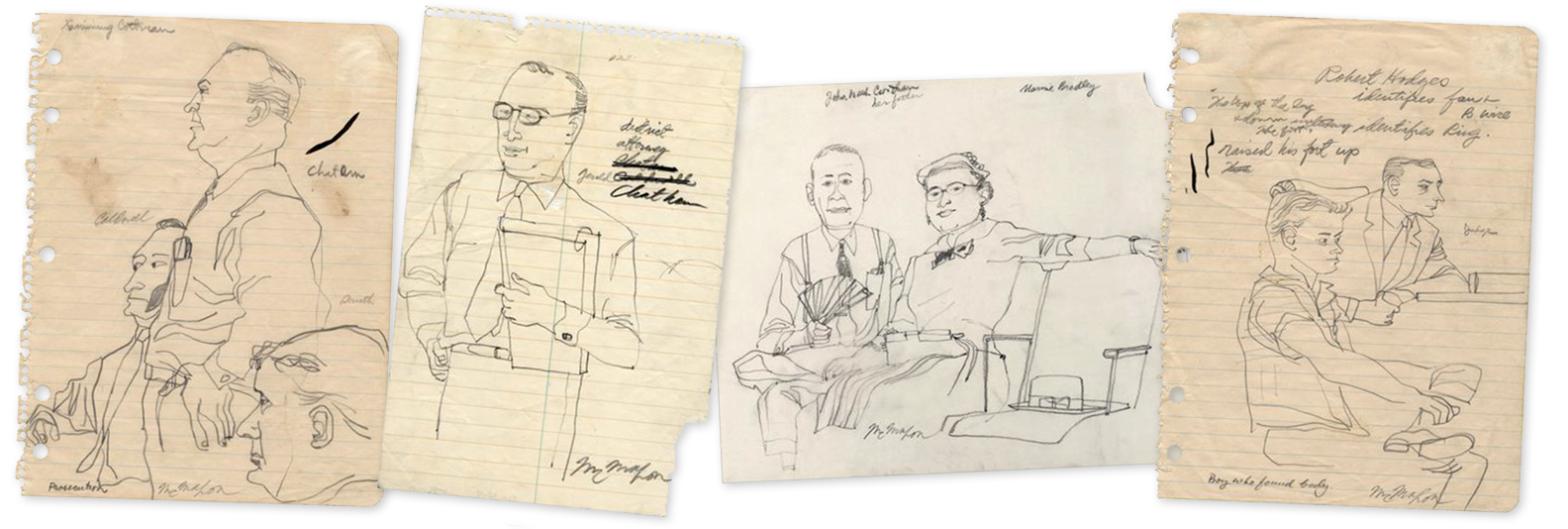
After a five-day trial and one hour of deliberation, the all-white, all-male jury acquitted Bryant and Milam, who would later confess to the crime.
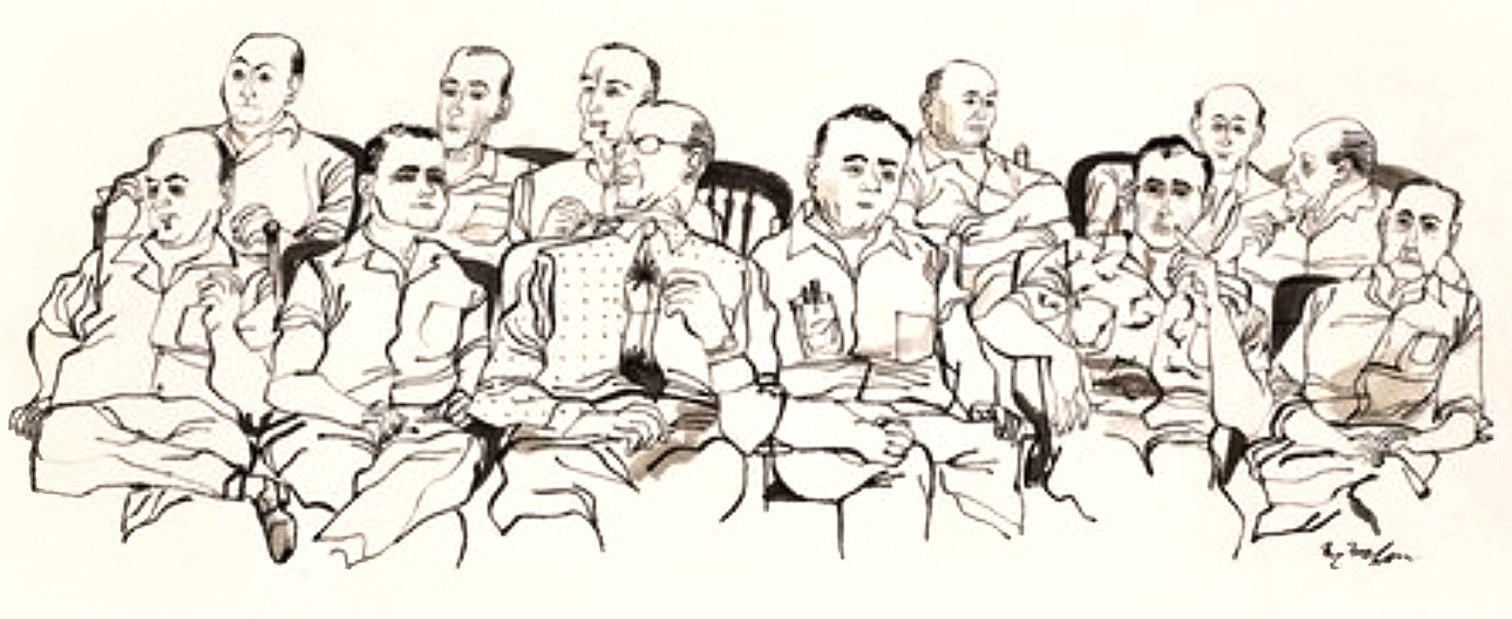
The public response and press coverage of the trial became a catalyst for change. McMahon’s drawings, published nationwide in Life magazine, would make him an important artist reporter committed to chronicling the civil rights movement. He documented Martin Luther King's "I Have a Dream'' speech during the 1963 March on Washington, and King's 1965 Selma to Montgomery march for Black enfranchisement. He also covered the two 1964 mistrials of the murderer of civil rights leader Medgar Evers.
McMahon’s extraordinary ability to capture a crucial moment at the Emmett Till murder trial paved the way to a prolific and successful career as a reportage artist. He produced thousands of drawings covering political rallies, sporting events and other newsworthy stories, underscoring the power of art to influence social change.
Another Famous Trial:
In the summer of 1968, more than 10,000 people came to Chicago, Illinois to protest the wildly unpopular Vietnam War at the Democratic National Convention. In 1969, eight (later seven) activists were linked to the protests and charged by the federal government with conspiracy and crossing state lines to incite riots.
Franklin McMahon was hired to draw the scene, including the eight defendants; Rennie Davis, David Dellinger, John Froines, Tom Hayden, Abbie Hoffman, Jerry Rubin, Lee Weiner, and a bound and gagged Bobby Seale.
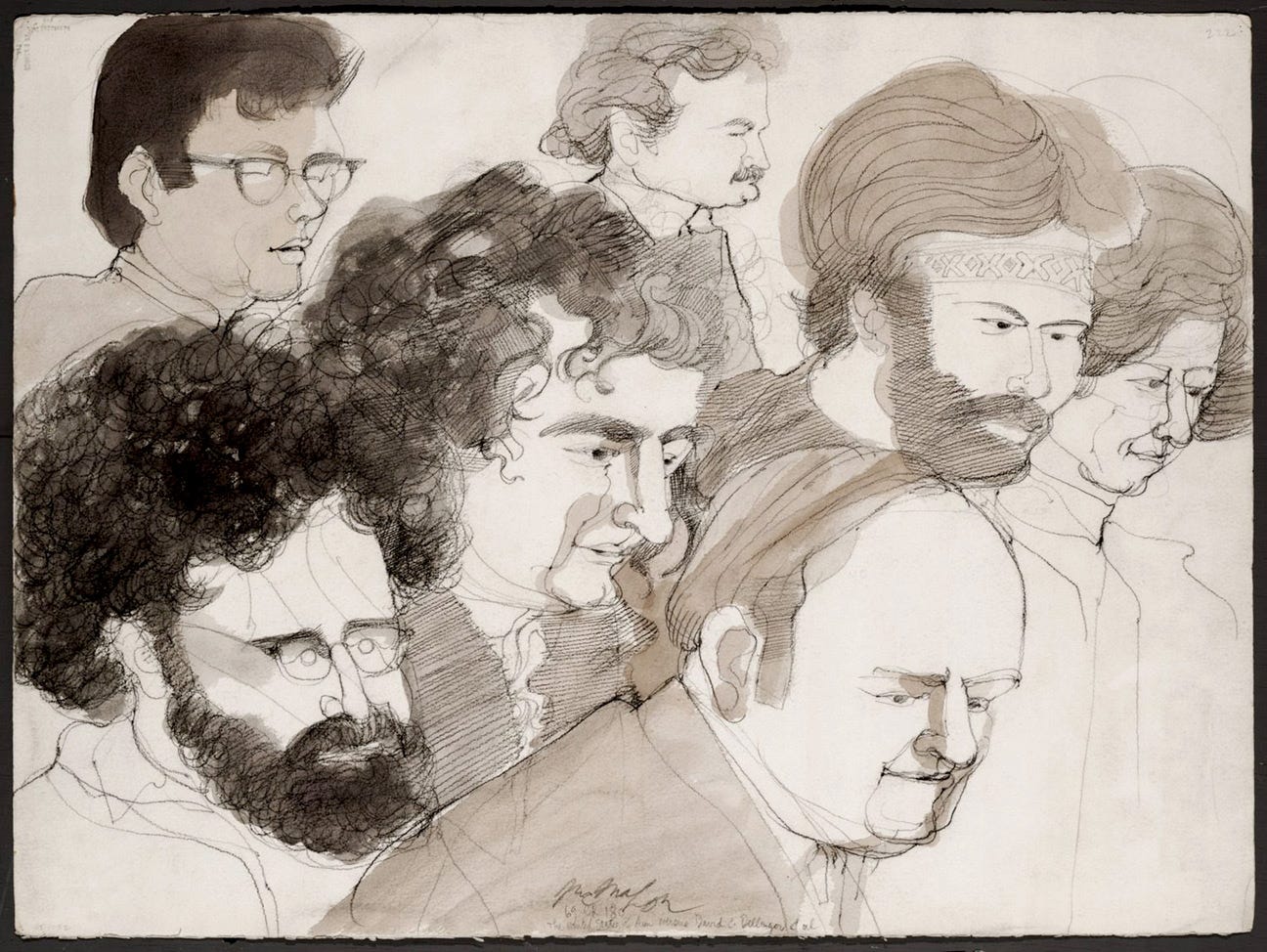
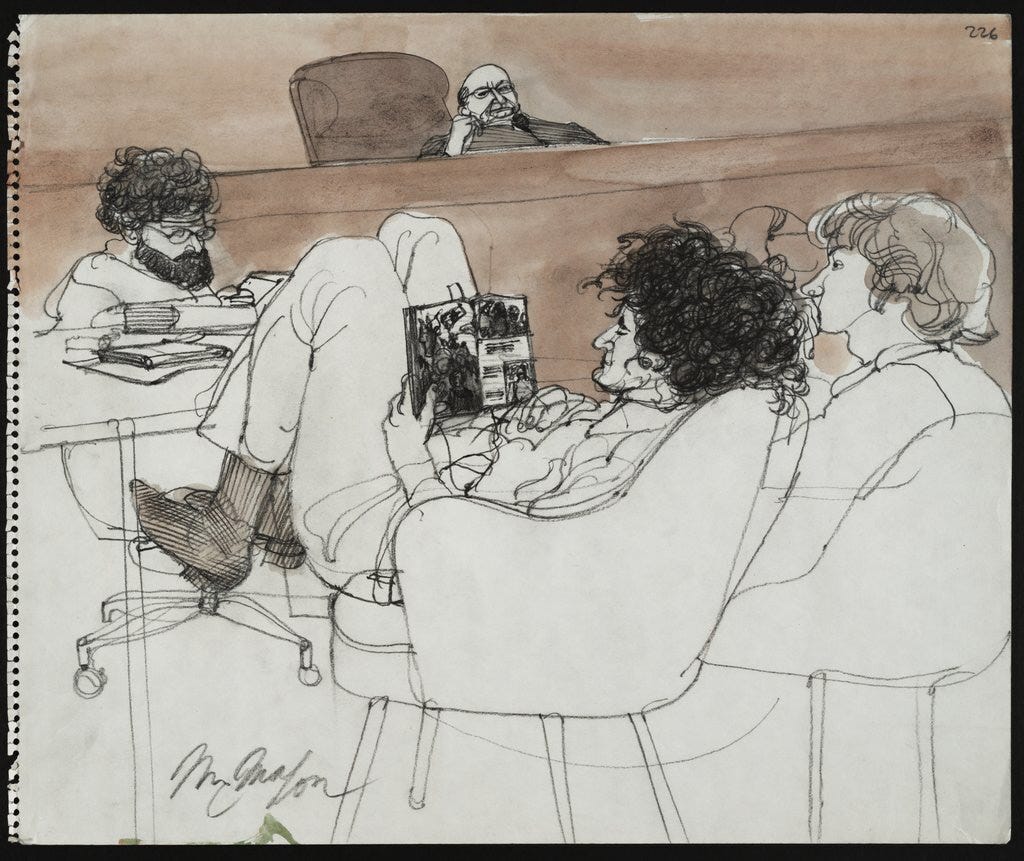
More to Know:
See more Emmett Till Trial drawings at the Chicago History Museum
An insightful conversation from Urban Sketchers Talk with Rob Sketcherman, Mario Linhares and Deborah McMahon Osterholtz.
An interview with McMahon for the Spring 1968 issue of Famous Artists magazine was reposted on Leif Peng's blog Today's Inspiration in three parts.






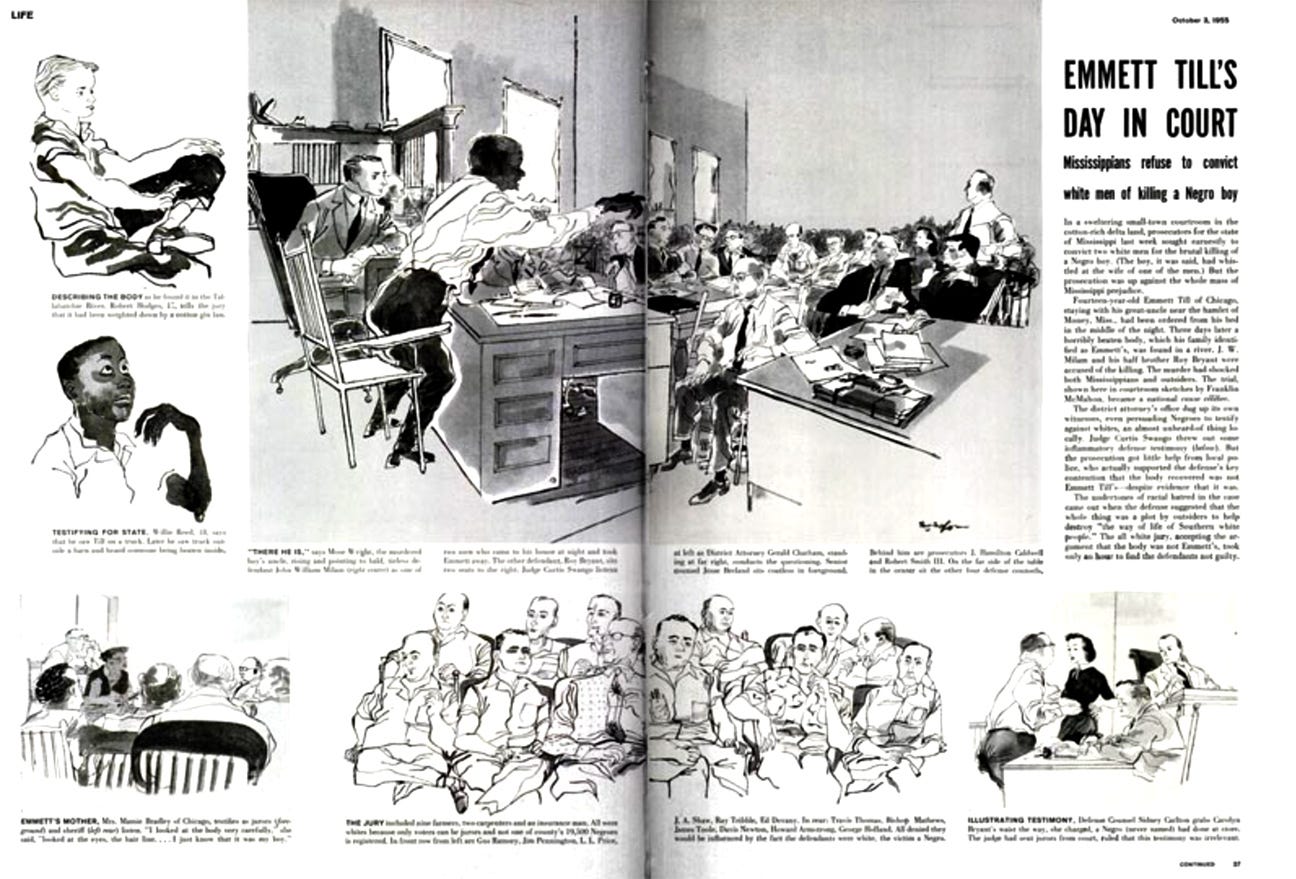
This idea of McMahon's of working in spiral bound notebooks in court in order not to attract attention and then redrawing them in ink later is a good one. I guess he had the time to do it before submitting them. Different era. Great drawings.
I enjoy reading these as much as you enjoy writing and re-writing your reportages. Franklin McMahon's drawings and his writings display such soul. Thank you for the histories.